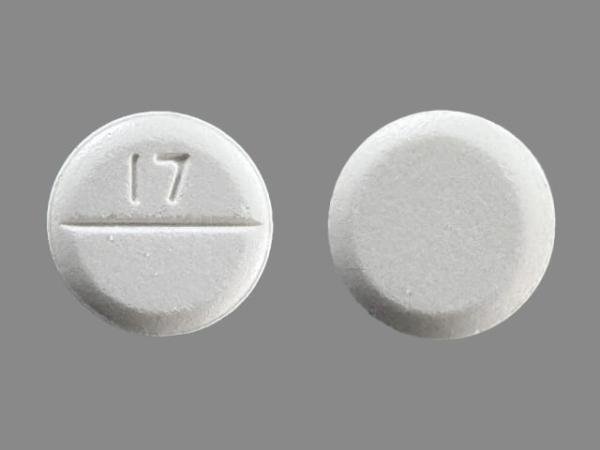Furosemide Patient Tips
Medically reviewed by Carmen Pope, BPharm. Last updated on July 26, 2024.
1. How it works
- Furosemide may be used to treat excessive fluid retention.
- Furosemide works directly on the loop of Henle. It prevents this part of the kidney from reabsorbing sodium and chloride, which increases the amount of fluid you urinate (pee) out.
- Furosemide belongs to the class of medicines known as loop diuretics. It is a potent loop diuretic.
2. Upsides
- Used to relieve the body of excess fluid caused by heart failure, kidney failure, cirrhosis of the liver, and other conditions.
- May be used in addition to other medicines for the treatment of high blood pressure.
- Available as an injectable form.
- Generic furosemide is available.
3. Downsides
If you are between the ages of 18 and 60, take no other medication or have no other medical conditions, side effects you are more likely to experience include:
- Dizziness on standing, gastrointestinal disturbances, changes in blood counts, and alterations in cholesterol levels or liver function.
- Furosemide's effect is very strong. Use can lead to a significant depletion of electrolytes which may lead to side effects such as muscle cramps and an irregular heartbeat; the risk is greater in people with a restricted salt intake or on certain medications.
- Tinnitus and reversible or irreversible hearing impairment have been reported. The risk is greater with higher dosages, injectable furosemide, severe renal impairment, low protein levels, and concomitant therapy with other drugs that are also toxic to the ears.
- May increase blood glucose levels and affect laboratory test results.
- Older people may not respond as well to the initial diuretic effect of furosemide.
- May not be suitable for some people including those with cirrhosis of the liver or ascites, kidney disease, already electrolyte depleted, or dehydrated.
- May interact with several other drugs including those that also lower blood pressure or potassium, lithium, corticosteroids, digoxin, phenytoin, and methotrexate.
Note: In general, seniors or children, people with certain medical conditions (such as liver or kidney problems, heart disease, diabetes, seizures) or people who take other medications are more at risk of developing a wider range of side effects. View complete list of side effects
4. Bottom Line
- Furosemide significantly increases urination which relieves excess fluid, but its use may also lead to the depletion of certain electrolytes in the body (such as potassium).
5. Tips
- Dosages may need to be adjusted depending on the individual; higher dosages need extra monitoring by a doctor. Some individuals may only need furosemide two to four times per week.
- You may be more sensitive to sunlight while taking furosemide; use an SPF 30-50+ sunblock when outside.
- Tell your doctor if you develop diarrhea or vomiting while taking furosemide.
- Get up slowly when going from lying down or sitting to standing.
- Your electrolyte levels will need monitoring regularly including occasional testing for diabetes.
- Potassium supplements or extra dietary potassium may be needed to counteract the effects of low potassium caused by furosemide.
- If you have diabetes, be aware that furosemide may increase your blood glucose levels.
6. Response and effectiveness
- The onset of diuresis (increased urination) is within an hour. The peak effects of furosemide are seen within one to two hours and its effects last for 6 to 8 hours.
- Furosemide is very potent. Excessive amounts can lead to profound urination and water and electrolyte loss. Severe dehydration may result.
7. Interactions
Medicines that interact with furosemide may either decrease its effect, affect how long it works, increase side effects, or have less of an effect when taken with furosemide. An interaction between two medications does not always mean that you must stop taking one of the medications; however, sometimes it does. Speak to your doctor about how drug interactions should be managed.
Common medications that may interact with furosemide include:
- aspirin
- allopurinol
- antibiotics, such as cephalexin, gentamicin, neomycin, or tobramycin
- anticonvulsants, such as phenytoin or fosphenytoin
- cisplatin
- cyclosporine
- duloxetine
- lithium
- methotrexate
- methylphenidate
- NSAIDs, such as diclofenac, ibuprofen, or indomethacin
- sucralfate
- other medications that lower potassium.
People taking oral medications for diabetes may need to talk to their doctor about adjusting the dose of their medicine.
Note that this list is not all-inclusive and includes only common medications that may interact with furosemide. You should refer to the prescribing information for furosemide for a complete list of interactions.
Related/similar drugs
Frequently asked questions
More about furosemide
- Check interactions
- Compare alternatives
- Pricing & coupons
- Reviews (122)
- Drug images
- Side effects
- Dosage information
- During pregnancy
- Support group
- Drug class: loop diuretics
- Breastfeeding
- En español
Patient resources
Other brands
Professional resources
- Furosemide monograph
- Furosemide (FDA)
- Furosemide Injection (FDA)
- Furosemide Oral Solution (FDA)
- Furosemide Tablets (FDA)
Other brands
Related treatment guides
References
- Furosemide. Revised 04/2024.Chartwell RX, LLC. https://www.drugs.com/pro/furosemide.html
Further information
Remember, keep this and all other medicines out of the reach of children, never share your medicines with others, and use furosemide only for the indication prescribed.
Always consult your healthcare provider to ensure the information displayed on this page applies to your personal circumstances.
Copyright 1996-2025 Drugs.com. Revision date: July 25, 2024.

